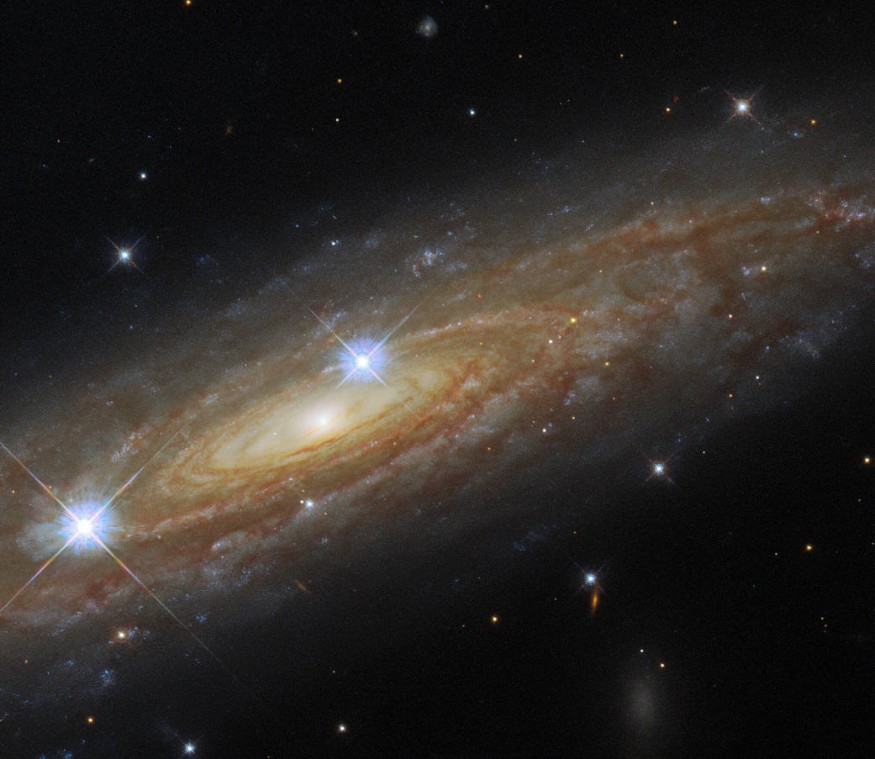The Hubble Space Telescope has photographed another spiral galaxy in the constellation Aquila. The galaxy, known as UGC 11537, is millions of light-years away.
Hubble captured this image to help scientists learn more about the massive black holes in the galaxy's core. After a problem in October prompted its science equipment to enter safe mode, the optical instrument is now fully functioning.
Hubble is one tool that has shown to be very useful in this ongoing investigation. For almost 31 years, NASA has relied on the space telescope as a critical instrument. The best part, per Screen Rant, is that the optical apparatus continues mind-blowing views of the universe today. Hubble has taken dozens of beautiful photographs of the weird world we all call home, whether it's a distant galaxy or a massive nebula.

Hubble Space Telescope Detects UGC 11537 in Aquila Constellation
UGC 11537, a spiral galaxy in the constellation Aquila, has been photographed by the Hubble Space Telescope. The galaxy is roughly 230 million light-years away from our planet, Digital Trends said.
The shot was captured using the Wide Field Camera 3 on the space telescope.
"The infrared and visible light capabilities of Hubble's Wide Field Camera 3 have captured the galaxy's tightly wound spiral arms swirling around its heart," NASA said.
"The image reveals the bright bands of stars and the dark clouds of dust threading throughout the galaxy," NASA added.
According to SciNews, experts used three filters to sample different wavelengths. Each monochrome picture connected with an individual filter is assigned distinct colors, resulting in the color. The Hubble image is being used to improve scientific knowledge about the gigantic black holes at the galaxy's center.
ALSO READ : NASA Hubble Space Telescope Shares Amazing Photo of 'Running Man' Nebula Colliding in Gases
Hubble's Photo Gallery of Galaxies
Spiral galaxies, as well as other types of galaxies, have been photographed by the Hubble Space Telescope before. In fact, galaxies are one of the Hubble Space Telescope's favorite subjects to photograph. Many of the Hubble Space Telescope images have been shown in Science Times.
The NGC 1385 is one of the spiral galaxies that Hubble has previously photographed. The NGC 1385 is a galaxy in the constellation Fornax that is 68 million light-years distant. The snapshot of the galaxy was taken using the space telescope's Wide Field Camera 3.
Mrk 1337 is another spiral galaxy that has been photographed by the Hubble Space Telescope. Mrk 1337 is around 120 million light-years away, and the shot was obtained to aid scientists in learning more about the universe's expansion.
Hubble Now Fully Functional
After a problem in October prompted its research equipment to enter safe mode, NASA said the 31-year-old space telescope is now fully operational.
The Advanced Camera for Surveys is the first of four research equipment retrieved by Hubble's crew. On Nov. 7, it was retrieved and placed back online. On Nov. 21, the Wide Field Camera 3 was released.
By the end of November, the Cosmic Origins Spectrograph was back online. The last of the four instruments recovered, the Space Telescope Imaging Spectrograph, was brought back online on Dec. 6.
Check out more news and information on Space in Science Times.
© 2025 ScienceTimes.com All rights reserved. Do not reproduce without permission. The window to the world of Science Times.











